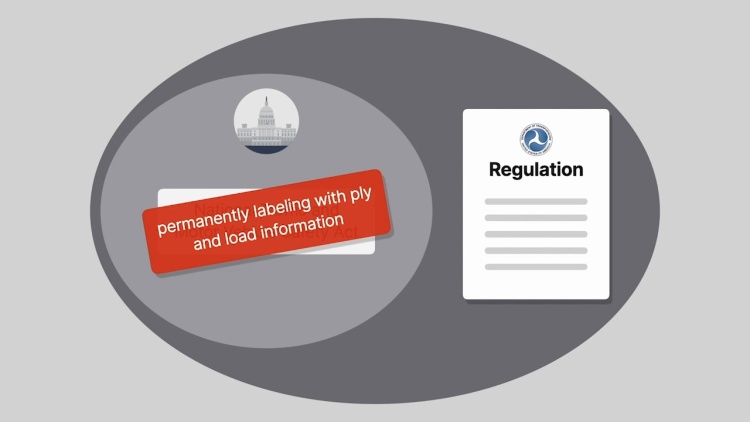National Tire Dealers & Retreaders Association, Inc. v. Brinegar
United States Court of Appeals for the District of Columbia Circuit
491 F.2d 31 (1974)
- Written by Kathryn Lohmeyer, JD
Facts
In 1972, the National Highway Traffic Safety Administration (NHTSA) issued Federal Motor Vehicle Safety Standard No. 117 (Standard No. 117), a new safety standard requiring that seven pieces of information be permanently molded into the sidewalls of retreaded tires, including the maximum load, number of plies, size, and other characteristics. Separate regulations required retreaders to mark each tire with the name of the manufacturer and the week the retreading was completed. Secretary of Transportation Claude Brinegar (Secretary) (defendant) denied various petitions for reconsideration of Standard No. 117, stating that the NHTSA had relied on its own expertise and information to formulate the requirements and would not provide supporting documentation. The administrative record included evidence showing that the labeling requirement would be economically burdensome for the retreading industry. The National Tire Dealers and Retreaders Association, Inc. (NTDRA) (plaintiff) petitioned the United States Court of Appeals for the District of Columbia Circuit for review of Standard No. 117, arguing that the permanent-labeling instructions represented arbitrary agency action that should be set aside under section 10(e) of the Administrative Procedure Act (APA), 5 U.S.C. § 706.
Rule of Law
Issue
Holding and Reasoning (Wilkey, J.)
What to do next…
Here's why 899,000 law students have relied on our case briefs:
- Written by law professors and practitioners, not other law students. 47,000 briefs, keyed to 994 casebooks. Top-notch customer support.
- The right amount of information, includes the facts, issues, rule of law, holding and reasoning, and any concurrences and dissents.
- Access in your classes, works on your mobile and tablet. Massive library of related video lessons and high quality multiple-choice questions.
- Easy to use, uniform format for every case brief. Written in plain English, not in legalese. Our briefs summarize and simplify; they don’t just repeat the court’s language.





